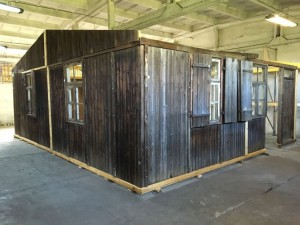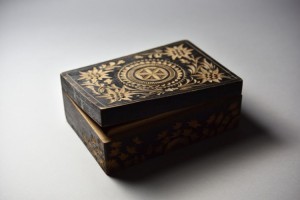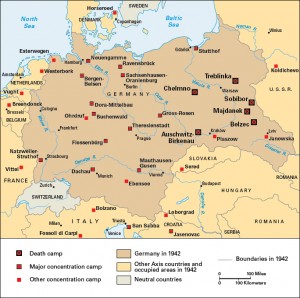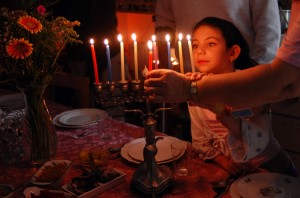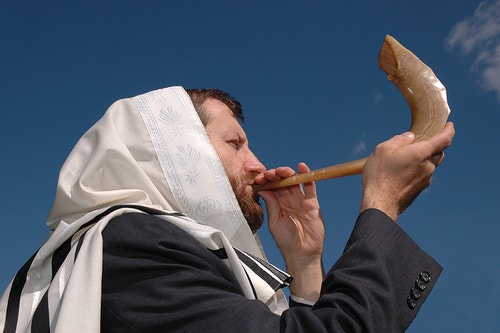Language Monday: Hebrew
Monday, April 9th, 2018April 9, 2018
Hebrew is one of the world’s oldest living languages. Hebrew has been the main language of the Jewish people since the beginning of Jewish history. It is also one of the two official languages of the state of Israel, along with Arabic.
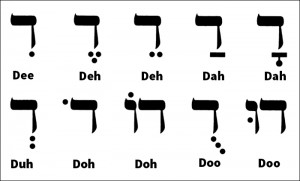
Click to view larger image
Hebrew vowels are indicated by vowel points placed with a consonant. Some vowel points are shown here with the letter Daleth. Credit: WORLD BOOK illustration
Hebrew is a Semitic language of the Afro-Asian family. It comes from the same source as the Arabic and Aramaic languages. The Hebrew alphabet has 22 letters. Most are consonants, but a few can represent either a consonant or a vowel. Vowels are not usually written, but they can be indicated by a system of dots and lines. Like Arabic and Aramaic, Hebrew is written from right to left.
Throughout history, Jewish communities developed their own ways of pronouncing Hebrew words. In the United States, the two most common pronunciation styles are the Ashkenazic and the Sephardic. The Ashkenazic originated in central and eastern Europe; the Sephardic originated in Spain.

Click to view larger image
The Hebrew alphabet has 22 letters, shown here in alphabetical order from right to left, as Hebrew is written. The illustration shows 26 letters, because 4 letters have two forms—with or without a dot—that stand for different pronunciations. Credit: WORLD BOOK illustration
For centuries, the Hebrew language was often considered sacred, called lashon ha-kodesh (holy language). Most of the Hebrew Bible, or Old Testament, is written in Hebrew. The compilation of Jewish law called the Mishnah, which dates from A.D. 70 to 200, is also written in Hebrew.
In A.D. 135, Roman armies killed or scattered the Jews of Judea and renamed the area Palestine. By about A.D. 200, a Hebrew-speaking community no longer existed. As a result, Hebrew died out as a spoken language and was used only in religious writing and in scholarly discussions for almost 1,700 years.
In the later 1700’s, a religious cultural movement called the Haskalah emerged among German and Polish Jews. The goal of the movement was to modernize traditional Jewish beliefs and practices. Haskalah is Hebrew for enlightenment. The Haskalah stimulated an interest in the revival of Hebrew for nonreligious uses, leading to the establishment of newspapers and magazines in the language. Jewish writers began to turn to Hebrew as a literary language.
Hebrew became popular among Jewish poets and novelists during the 1900’s and early 2000’s. Leading Hebrew writers include the eastern European poet Chaim Nachman Balik and the Israeli novelists and short story writers Shmuel Yosef Agnon, Aharon Appelfeld, David Grossman, Amos Oz, and A. B. Yehoshua. Agnon shared the 1966 Nobel Prize for literature.
Hebrew underwent a revival as a spoken language beginning in the late 1800’s. At that time, Jews from many lands began to settle in Palestine. Many started speaking Hebrew as their everyday language, passing it on to their children.

